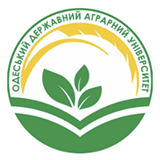Detailed introduction of Odessa State Agrarian University:
Introduction
Odessa State Agrarian University is one of the oldest state agricultural higher education institutions in southern Ukraine and the main educational and methodological scientific center for training high-quality personnel for agricultural production areas in the southwestern Black Sea.
Overview
Student size: The school currently provides diversified educational opportunities for more than 2,000 students from all over Ukraine and abroad.
Number of faculty: The school has 150 teachers, most of whom have a doctorate or doctorate in science.
History
The school's history can be traced back to 1918, when agricultural training began in three departments: crops, social agronomy and animal husbandry. By the end of the 1930s, it had faculties of agronomy, viticulture, animal technology, veterinary medicine and land management. In 2001, the Agricultural Research Institute merged with the Omsk State Agricultural University to form the current Odessa State Agricultural University.
Founded in 1918.
School Strength
Faculty: It has a large teaching team of 391 faculty members, including 41 doctors and professors, 165 associate doctors and associate professors.
Teaching Facilities: It has one of the largest agricultural libraries in southern Ukraine, built in 1921, with a collection of more than 820,000 domestic and foreign publications. In addition, the school also has advanced teaching and research facilities such as the university "Veterinary Clinic", the multifunctional veterinary research laboratory, and the Odessa Earth Satellite Monitoring Center.
Research achievements: Scientists at the school have made many important achievements, such as the breeding of Eritrospermum-127, a winter soft wheat variety widely grown in southern Ukraine, non-flooded rice varieties, winter peas, 16 fresh grape varieties, and fodder and grain trifoliate grass varieties.
International cooperation: The school actively carries out international cooperation, has signed bilateral agreements and memoranda with institutions in 25 different countries, and realizes academic exchanges of students and faculty members through the Erasmus + Europe program every year. We also invite well-known foreign professors and experts to give lectures at the school, and maintain long-term cooperative relations with universities and research institutions in many countries such as Germany, the United States, and Slovakia.
Nature of the institution
A public non-profit higher education institution.
Educational philosophy
Focus on cultivating students' ability to solve practical problems in agricultural production, emphasize the integration of scientific research results into teaching plans, and enable students to master practical professional knowledge and skills to adapt to the development needs of the agricultural field.
Key laboratories and disciplines
Key disciplines: Agronomy, plant protection, reserve land management, crop breeding, grape planting and grape processing, veterinary medicine, etc. are the key disciplines of the school.
Key laboratories: Multifunctional Veterinary Research Laboratory, Odessa Earth Satellite Monitoring Center, etc.
Faculty
The school has 4 colleges, namely the School of Veterinary Medicine, the School of Surveying and Mapping Land Management and Agricultural Engineering, the School of Economics and Management, and the School of Agricultural Biotechnology. It also includes the Institute of Biotechnology and Aquaculture Educational Sciences, the School of Biological Resources Management, the Odessa Professional College, and the School of Graduate Education and other teaching and research units.
Ranking
In the 2024 ranking, the school ranked 150 in China and ranked 150 in the world. 9018.
Expenses
The tuition fees for different majors in the school are different. For specific fees, you can scan the code to view the introduction of the university's majors and tuition fees.
Campus
Teaching environment: The campus is located in Odessa, Ukraine, with a beautiful environment and modern teaching buildings, laboratories and other teaching facilities, providing students with a good learning environment.
Living facilities: There are student dormitories on campus to provide accommodation convenience for students from other cities and villages. In addition, the living facilities around the school are complete and can meet the daily needs of students.
Cultural and sports facilities: The school has cultural and sports facilities such as museums, cultural and leisure centers, student sports and the Black Sea "Luke Moriye" health camp to enrich students' extracurricular life.
-
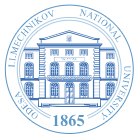
Odesa National University I.I. Mechnikov
-

V.N. Karazin Kharkiv National University
-

V.I. Vernadsky Crimean Federal University
-

National Medical University O.O. Bogomolets
-
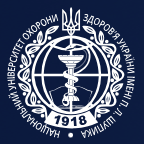
National Medical Academy of Post-Graduate Education named after P.L. Shupik
-

Taras Shevchenko National University of Kyiv
-

H.E.I. «Podillia State University»
-

Dnipro National University of Railway Transport named after academician V. Lazaryan
-
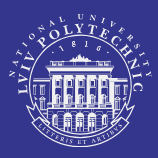
Lviv Polytechnic National University
-
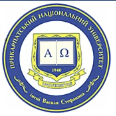
Vasyl Stefanyk Precarpathian National University
-

Mesoamerican University
-

Istmo University
-

Mariano Galvez University of Guatemala
-

Regional University of Guatemala
-

Galileo University
-

Francisco Marroquín University
-

Rafael Landívar University
-

University of the Valley of Guatemala
-

University of San Carlos of Guatemala
-

Technological Institute of Tlaxcala Plateau
-

Golfo University
-

Technological University of South Sonora
-

Technological University of Huejotzingo
-

Tizimín Institute of Technology
-

Chilpancingo Institute of Technology

